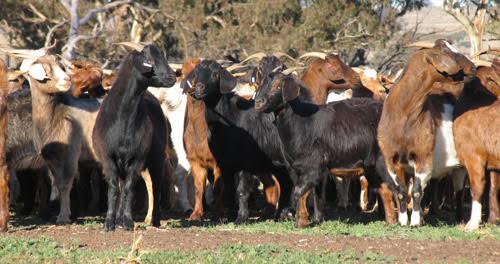
THE value of western division land in New South Wales and Queensland has risen sharply in recent times on the back of strong pricing across most commodity classes.
This week’s property review looks at how the regions’ property prices have tracked in marginal country suited to running goats.
The process of rebuilding Australia’s goat herd following two years of drought is reflected in quarterly data from the Australian Bureau of Statistics.
While both slaughter and production levels have declined since the previous quarter, they are both up on year-ago levels. June quarter goat slaughter declined by 1.5pc to hit 268,310 head. Despite the decline, slaughter was up 23pc on the 2020 June quarter. Goatmeat production was up 33pc on year-earlier quarter levels.
New South Wales perspective
John Harrison is the national head of Colliers Agribusiness Valuation and Advisory Services team.
His analysis of 2021 property sales indicates that NSW Western Division grazing land has transacted at rates ranging from $95/ha to $267/ha.

John Harrison
Mr Harrison said rates towards the lower end are attributed to remotely located properties with indirect access – around Wanaaring.
“Rates towards the upper end are located towards Cobar and Mount Hope which benefit from higher rainfall and generally attract larger feral goat populations,” he said.
In terms of market activity, Mr Harrison analysed 36 transactions that have occurred across the NSW Western Division from 2017 to today.
He found significant growth in land values over the past four years.
“Average land values have increased by 62 percent, with values rising from $120/ha in 2017 to $194/ha in 2021. On a dry sheep equivalent basis, this reflects a 53pc increase, rising from an average rate per DSE of $448 in 2017 to $684/DSE in 2021.”
This is graphically represented in this graph:
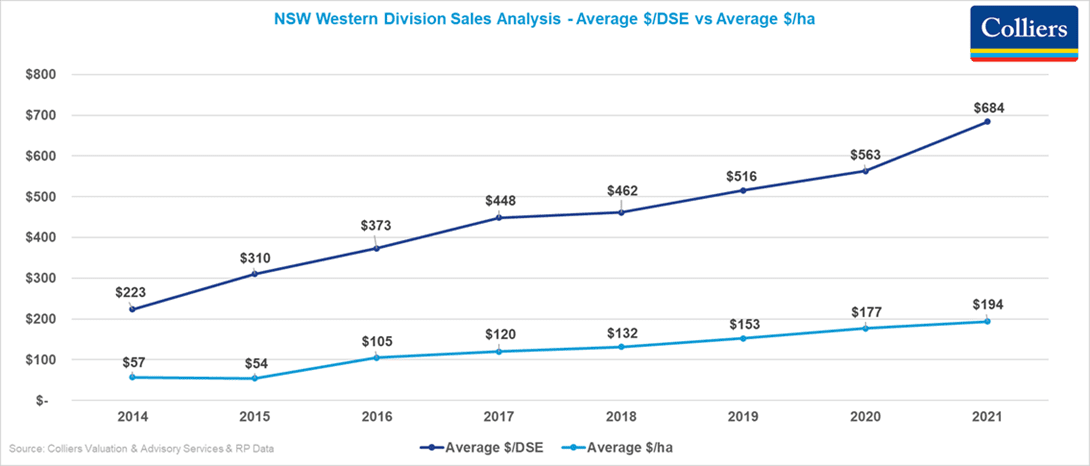
Mr Harrison said the rises have been largely driven by the strong returns achieved from sheep, wool, cattle and goat commodities, as well as record low interest rates.
Property sales 2021 – 2017
- October – Negotiations are underway for Cobar’s 20,915ha Bulgoo and 28,997ha The Meadows. The sale price is understood to be $16.5 million WIWO including 10,000 rangeland goats and plant.
- September – 24,881ha Pine Hill, 155km north east of Ivanhoe and 112km north west of Mt Hope, sold for $2.5 million including 1151ha of barley.
- August – 21,314ha Ashleigh Downs (neighbouring Pine Hill), 160km south of Cobar and Hillston, sold for $4 million WIWO, $173/ha or $740/DSE.
- August – 33,789ha Wendi Station, 20km from the Silver City Highway and 100km south of Broken Hill, sold for $6.05 million or $178/ha or circa $820/DSE.
- June – 24,914ha Metford, 65km east of Broken Hill, sold for $4.26m or $171/ha or $742/DSE.
- April – 45,534ha Koonaburra Station, 100km north east of Ivanhoe and 140km south west of Cobar, sold for $9.185m, $202/ha or circa $740/DSE. Minus GST, Koonaburra made $8.35m $183/ha or $759/DSE.
- *March – 18,935ha Stanifords and Yackarboon, 140km north west of Lake Cargelligo or 140km north of Hillston, sold for $4.7m ($248/ha).
- *March – 32,632ha Yara and 20,905ha Kilparney, 70km and 100km north of Lake Cargelligo, achieved around $20m bare or $374/ha or around $667/DSE.
- April – 9863ha Amphitheatre Station sold for $2.115m, $214/ha or $813/DSE.
- December 2020 – 35,555ha Langidoon (neighbouring Metford) sold for $5.44m or $153/ha or $635/DSE.
- December 2019 – 24,810ha Paringa Station, Fowlers Gap, sold for $3.5m or $131/ha or $524/DSE.
- January 2019 – 127,935ha Tintinallogy Aggregation, Menindee, sold for $20.75m or $162/ha or $511/DSE.
- January 2017 – 24,913ha Mt Hope Station (adjoining Stanifords) sold for $5m or $191/ha or $475/DSE.
*It is difficult to determine a DSE rating given it was sold as a grazing and farming aggregation.
Supply and demand
David Russell from Landmark Russell has been a well-known name in the Cobar area and Western Division since 1984. In recent years, he has seen land values jump by 30 to 40 percent.
“Demand is being driven by ridiculously cheap money, producers seeking sheep and goat country and those chasing carbon farming opportunities, especially over the last 12 months,” he said.
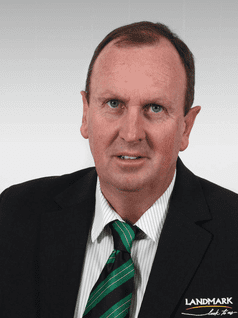
David Russell
Mr Russell said property supply is extremely tight with very few buying opportunities available.
“After a couple of busy years, older producers are reluctant to sell their properties and put money in the bank when interest rates are so low.”
He said many local producers had come out of the drought with well-fed stock that have turned into valuable assets, goats included.
“Producers who used to take a box trailer load of goats to town, get the cash and spend it at the supermarket have now turned it into a business. Properties have been improved with fencing and infrastructure and producers are making serious money.”
“Liveweight prices have risen from 80 to 90c/kg to $4/kg. Goats that were once making $30 to $40 are now selling for between $150 to $280. There is only a certain amount of country you can run goats on – 70 percent of a goat’s diet is browsing, so they love this mulga grassland/rangeland country,” Mr Russell said.
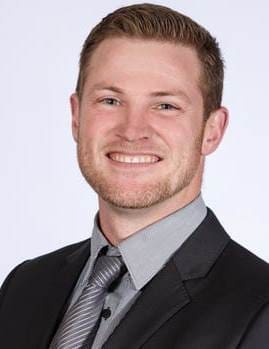
David Leeds
David Leeds from Border Real Estate said NSW’s west was experiencing a perfect storm.
“Demand is being driven by low interest rates, high commodity prices across almost all market segments (goats, sheep and cattle) and non-conventional sources (carbon farmers and government agencies),” he said.
“This shift has resulted in demand outstripping supply, resulting in price gains across almost all market segments.”
Colliers’ John Harrison agrees, saying demand is diverse.
“It is stemming from a mix of government groups (NSW Parks and Wildlife has purchased multiple properties in the last 12 months), existing Western Division graziers or neighbouring landholders seeking expansion opportunities, and interstate buyers looking for affordable breeding country to expand,” Mr Harrison said.
One of the few properties currently on the market is the 121,810ha historic Avenel Station, 150km north of Broken Hill.
With price expectations of more than $20 million, it has attracted strong interest from a diverse range of buyers from across Australia – large station owners seeking expansion, as well as from those with funds for carbon credit projects.
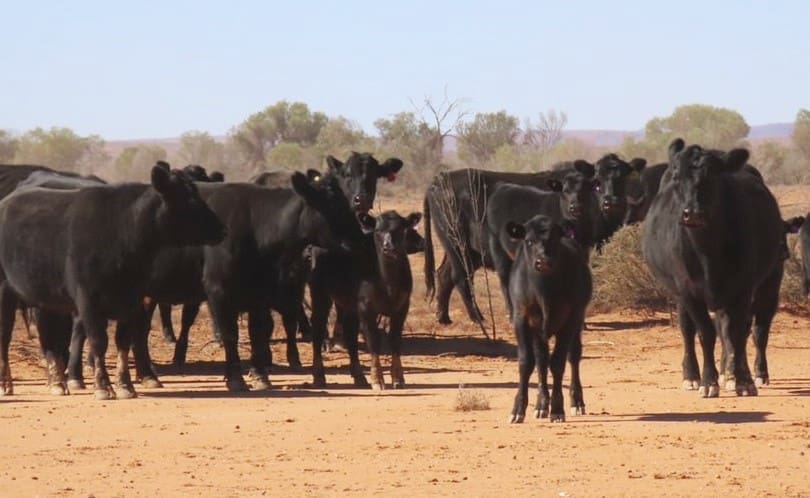
The 121,000ha historic Avenel Station, 150km north of Broken Hill carries price expectations of more than $20 million
Goat prices
There is no doubt that goats have played a major role in improving profit margins for graziers throughout western NSW over the past five to ten years.
Based on the most recent Over the Hooks report prepared by Meat and Livestock Australia (28 September), the goat indicator is sitting at 818c/kg cwt (carcase weight). Over the past three years, prices have hovered between circa high 500c/kg to the mid 900c/kg.
Mr Harrison said goats helped keep many producers afloat during the drought.
“Goats are certainly providing an opportunity for people to make good money – whether it be via contract mustering and then building up funds to acquire properties or additional livestock, or existing graziers looking for additional cash flow.”
In addition to record prices for beef and sheep, Mr Harrison said producers can make good money from goats.
“There are operators in the Western Division who have abandoned sheep production and are now solely focussed on breeding a commercial goat herd because prices are so good,” he said.
Queensland perspective

Lachlan Dunsdon
Similar land values are evident in western Queensland, according to Lachlan Dunsdon, national director of rural and agribusiness at Acumentis Property Valuations.
“Clear increases have been evident in property rates since 2017, however several recent transactions are for carbon abatement projects which are priced differently to traditional grazing markets, be that cattle, sheep or goats.”
A recent transaction is the 53,100ha Rosevale Station, 20km from Wyandra and 98km from Charleville, which shows $260/ha or $3625/AE. It was previously run (in part) as a goat enterprise and will continue to do so under the new owners.
Mr Dundson said established family farming enterprises remained the largest portion of buyers in the market and carbon buyers were prevalent and strong in the mulga belts.
In Queensland, there are many agribusinesses that are wholly, or in majority, goat businesses.
Mr Dundson said goats are a complementary grazer with sheep or cattle, so they can be run conjunctively.
“Goat grazing however is not limited to western Queensland. We are aware of several landholders across southern and central Queensland who are also running goats.”
Mr Dundson said these producers may have sold off a larger portion/all of their livestock during the drought and are now facing significant restocking costs.
“Producers are retaining female progeny to grow breeder numbers and male progeny are generally being put over the hooks. As such, the supply of livestock on the market is low against significant demand, which makes restocking expensive.”
Mr Dundson said established producers and rural entrants alike are looking at all livestock options to build a business around – goats included.
“Goats are providing a lower cost/head option of generating some cashflow which can fund the replacement of sheep or cattle at a later stage.”

Malcolm Malone
Malcolm Malone from Colliers’ Brisbane office has analysed 2020/2021 land values in Queensland’s south west.
“They range from $45/ha to $293/ha – up from $49/ha to $84/ha in 2017. The higher end of the range are properties with quality grazing country, a good level of fencing (including exclusion) and livestock and water infrastructure.”
This is evidenced in the following two Queensland properties that have sold twice in the past five years:
- December 2020 – 52,245ha Nimboy, 118km west of Charleville, sold for around $3m (including a carbon credit scheme). It traded in July 2018 for $2.7m representing a 9.6 percent increase in value.
- October 2020 – 45,601ha Besm, 50km north east of Thargomindah, sold for $3.9m. It transacted in July 2017 for $2.25m indicating a 75 percent increase in value.
Mr Malone said demand was strong in Queensland with a limited number of grazing properties listed for sale.
“Interest is mixed and highly dependent on a property’s attributes and development. There is strong enquiry from interstate investors looking at a property’s suitability for carbon farming.”
“Local demand is coming from neighbours and generally people with other rural property looking to increase the scale of existing operations, whether it be for cattle sheep or goats within the region,” he said.
Mr Malone said growth in western Queensland property values have been influenced by low interest rates and rising commodity prices for cattle, sheep and goats, and from carbon scheme investors.

HAVE YOUR SAY